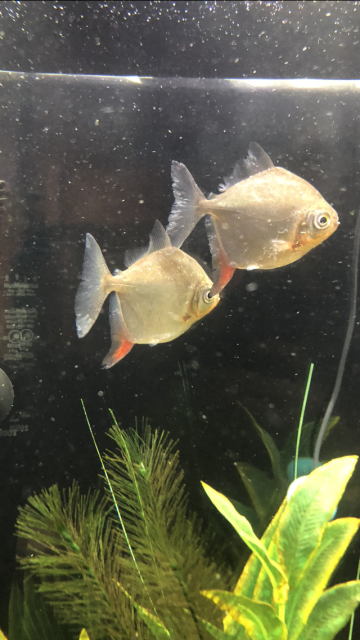I've dealt with this many times with different species. With groups of some species that aren't especially aggressive you might still see this when they spawn. I don't see anything in your photos beyond the scuffs and fin fraying you'd expect if they've been chased or nipped at, relatively minor, nothing to panic over, and nothing out of the ordinary for what they've been through.
Everyone's going to have their own protocol for dealing with this and that's because more than one way works. There's not one single 'right' way and over the years I've used more than one successfully. The thing to keep in mind with aloe is, yes, it can help heal and is mildly antiseptic, but it can add to the organic bioload, so you don't want to overdo it. My typical protocol is as follows:
Water change. I'll do a big one, minimum 50%, usually bigger, sometimes 80-90%. This may not be a good idea for everyone, but with my water, my tanks, big water changes have never been an issue. Also a filter rinse (non-chlorinated water) if they're dirty or due. Besides the general benefit of clean water, you're reducing the load of organics and the level of potential bacteria that might attack the damage. Salt is proverbial, though I've read articles saying it doesn't do much. Ime it does appear to help, but you don't need much, hardly the tablespoon per 5 gals aquarium salt packages recommend-- I typically do more like 2-4 tablespoons per 100 gals. Melafix-- low dose, like 1/4-1/3 what the bottle says. This is enough for minor scuffs and fin damage ime and it reduces the Melafix bugaboo of causing rapid breathing. Melafix can temporarily foam a little if you have good surface agitation, and even at a lower dose you might still get some accelerated breathing, but it's mild and temporary with the lower does ime.
Old school-- methylene blue. I still use it occasionally if a fish doesn't seem to be healing or there's a persistent spot of some kind. Meth blue is pretty effective ime. Used to buy into common wisdom that it damages your beneficial bacteria, but then I read it shouldn't be a problem with well established filters with permanent bio media and I've since found this to be true with low to moderate meth blue doses.
Like I say, everyone has their own approach, this is what works for me. I've done it more than one way over the years, but the bottom line is I've never had a case of 'fin rot', with the rare exception of a diseased fish with something else going on or an old fish nearing the end of its life (at which point I would normally euthanize the fish, anyway).




